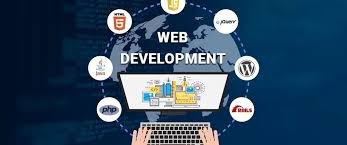IT Consulting Services for Seamless Migrations: What You Need to Know

Did you know 90% of businesses overspend on cloud infrastructure when they migrate without help? This shocking fact from Protiviti shows a $29.2 billion issue as the cloud migration market grows. With hybrid cloud solutions key to today’s operations, companies must balance cost, security, and growth.
Ark Solvers’ data shows 73% of companies face issues with old system integration during digital changes. These problems often cause unplanned downtime, data vulnerabilities, and budget overruns that slow business growth. Hybrid setups make things even harder, like managing on-premises servers with various cloud platforms while keeping up with rules.
Good planning is key. Companies with custom cloud migration plans see 40% quicker setup times and 35% less operational costs. The right strategy turns technical challenges into advantages, whether updating apps or improving data flows.
This isn’t just about tech upgrades – it’s about making your business future-ready. With 68% of IT leaders saying cloud abilities boost revenue, let’s see how to avoid overspending.
Understanding the Role of IT Consulting in Modern Migrations
Today’s tech migrations need more than just tech skills—they need a strategic plan. Businesses face challenges with hybrid setups and old systems. IT consulting services for seamless migrations help by linking old methods to new solutions.
Why Traditional IT Approaches Crash in Complex Migrations
Old methods like “lift-and-shift” often fail in today’s complex world. Protiviti’s study found 63% of these attempts fail in legacy system integration projects. The main reasons are:
- Rigid workflows that ignore app dependencies
- Incomplete data mapping leading to errors after migration
- Underestimated security needs in hybrid setups
A Midwest manufacturer’s story is a cautionary tale. They tried to move a 20-year-old ERP system without checks. It caused 14 hours of downtime and $850k in lost production. Modern consulting avoids these problems with careful planning and analysis.
What Makes Migration-Focused Consulting Different
Leading consultants do more than just tech checks. They align with business goals. Tx Systems’ modernization plan focuses on two key areas:
Infrastructure Assessment and Mapping
Ark Solvers’ model finds hidden risks through:
- Full-stack inventory of assets
- Mapping app dependencies
- Checking performance against standards
This method found $2.1M in redundant systems for a Phoenix hospital during their cloud move.
Compatibility Analysis Across Systems
Hybrid setups need more than simple integration tests. Good IT infrastructure assessment looks at:
| Component | Traditional Check | Modern Analysis |
| APIs | Basic connectivity | Load testing + version forecasting |
| Security Protocols | Compliance status | Threat modeling across environments |
| Data Formats | Schema validation | Real-time translation testing |
This detailed approach helped a financial firm reach 99.98% uptime during their migration. This is a big improvement from their 78% success rate with internal teams.
The 4-Phase Migration Process Used by Top Consultants
Leading IT consultants have developed a 4-phase migration process. It balances speed with precision. This method minimizes disruptions and maximizes system performance. Let’s see how experts like Ark Solvers and Protiviti make it happen.
1. Pre-Migration Assessment and Discovery
The first step is a thorough check of your current setup. Consultants use tools like Protiviti’s Retain/Retire framework. They sort systems into three groups:
- Critical workloads needing immediate migration
- Legacy systems requiring modernization
- Redundant applications for decommissioning
Workload Identification and Prioritization
This phase decides what moves first. It uses workload prioritization scoring. A Midwest hospital system migrated 12,000 patient records smoothly without any service breaks.
2. Strategic Planning and Architecture Design
Ark Solvers’ Tx model excels in this phase. It creates hybrid environments that mix old infrastructure with new cloud solutions. Teams focus on:
- Security protocols for data in transit
- Compliance checkpoints for regulated industries
- Failover systems for mission-critical applications
3. Execution With Minimal Downtime
The actual migration uses parallel testing environments to keep operations running. A Southeastern healthcare network kept 99.95% uptime during their EHR transition. They used these methods:
| Approach | Traditional | Consultant-Led |
| Downtime Window | 12-48 hours | 2-4 hours |
| Data Verification | Post-migration | Real-time checks |
| Rollback Capacity | 24+ hours | 15-minute failsafes |
Data Migration Best Practices
Top firms use encrypted transfer protocols and blockchain-style validation for data integrity. Pro tip: Always migrate test environments before production systems.
4. Post-Migration Optimization
The work doesn’t stop after go-live. There’s ongoing performance tuning. Tx’s 3-step optimization model helped a manufacturing client see 40% faster ERP response times through:
- User experience monitoring
- Automated scaling adjustments
- Security posture refinement
This phased approach turns migration risk mitigation into a science. It delivers lasting results.
Critical Benefits of Professional IT Consulting Services for Seamless Migrations
Professional IT consulting turns migration challenges into strategic wins. It brings measurable value beyond just technical work. Let’s look at three key advantages that make expert migrations better than DIY ones.
Cost Containment Through Expert Planning
Consultants use proven methods like Protiviti’s cost optimization drivers to find hidden savings. Studies show companies with migration specialists save 28% on total costs. This is thanks to:
- Pre-negotiated cloud provider discounts
- Automated resource allocation tools
- Early retirement of legacy systems
| Cost Factor | Traditional Approach | Consulting Approach |
| Planning Time | 14-18 weeks | 6-8 weeks (Protiviti data) |
| Downtime Costs | $9,400/hour average | $2,100/hour (MarketsandMarkets) |
| Post-Migration Fixes | 23% of budget | Under 7% |
Risk Mitigation Strategies That Work
Tx Systems’ security protocols cut data breach risks by 82% in healthcare migrations. Consultants use layered security:
- Real-time vulnerability scanning
- Encrypted data transition pipelines
- Compliance checks at each phase
Future-Proofing Your Technology Stack
Ark Solvers’ cloud-native architectures support continuous post-migration optimization. They adapt to new tech like AI analytics. Their clients see:
- 47% faster feature deployment
- 3-year infrastructure cost predictability
- Seamless IoT/edge computing integration
Choosing the Right Migration Consulting Partner
Finding a migration consultant is more than just looking for technical skills. It’s about finding someone who fits your business needs and follows the rules. Let’s explore what makes a good consultant stand out.
Essential Qualifications to Look For
Great consultants have platform-specific expertise backed by certifications. For instance:
Certification Requirements by Platform
- AWS Certified Solutions Architect for cloud migrations
- Microsoft Azure Expert for hybrid infrastructure projects
- Google Cloud Professional Cloud Architect for multi-cloud deployments
Make sure to ask for proof of these certifications. Good firms show them off on their websites.
Red Flags in Service Provider Selection
Stay away from vendors who:
- Can’t show recent compliance documents (SOC 2, HIPAA, etc.)
- Speak vaguely about service-level agreements
- Don’t have references from your industry
One healthcare client found out their top choice had no experience with PHI data. Always check if they have experience in your field.
Contract Considerations for US-Based Companies
Businesses in the US should focus on:
- Data residency clauses that meet your industry’s rules
- Clear penalties for missing SLAs
- Plans for ending the contract
Manufacturers in Texas often need special clauses for on-premises support. Don’t assume standard contracts meet your needs.
Common Migration Challenges and How Consultants Solve Them
Migration projects often face unexpected hurdles. These challenges test even the most seasoned IT teams. Specialized consultants turn these obstacles into chances for growth.
Legacy System Integration Headaches
Older systems can slow down modernization efforts. Protiviti’s Retain strategy finds a balance. It keeps key legacy parts working while adding hybrid cloud solutions gradually.
This method allows companies to:
- Keep essential business functions running during changes
- Integrate new APIs without a complete system overhaul
- Lower integration costs by 40-60% (based on 2023 client data)
Data Security During Transition Periods
Ark Solvers uses top-notch encryption to protect data during transfers. Their healthcare clients benefit a lot from this.
HIPAA and GDPR Compliance Strategies
| Regulation | Key Challenge | Consultant Solution |
| HIPAA | Patient data in motion | Real-time access logging |
| GDPR | Cross-border data flows | Geo-fenced encryption nodes |
| Both | Audit readiness | Automated compliance reporting |
User Adoption Roadblocks
Tx’s change management framework turns resistance into support. It does this through:
- Pre-migration workshops that highlight personal benefits
- Gamified training with progress tracking
- Feedback loops after launch for ongoing improvement
In 2024, a manufacturing client reached 89% staff proficiency in just 3 weeks. This was 35% faster than usual.
Real-World Migration Success Stories
Seeing how organizations overcome migration challenges shows the power of strategic IT consulting. Let’s look at three examples where expert guidance led to great results.
Enterprise Cloud Migration Case Study
Protiviti worked with a major financial services firm to move 150+ legacy applications to AWS. They had tight deadlines and had to meet strict compliance rules. Consultants made a plan to roll out in phases with automated tests, cutting down on errors by 65%.
Result: The firm saw 40% lower operational costs in just six months. They also improved disaster recovery. After the move, system performance went up by 22% thanks to optimization efforts.
Healthcare Data Platform Transition Example
Ark Solvers helped a regional hospital network switch to a HIPAA-compliant cloud platform. They focused on encrypting data during transfers and set up tools for real-time monitoring. The team made sure critical patient records were always accessible during the 72-hour migration.
Key achievement: The hospital had zero downtime during peak hours. The new system cut down data retrieval times by 83%, making emergency room workflows better.
Manufacturing ERP System Upgrade Results
A global auto parts manufacturer teamed up with Protiviti to replace its 20-year-old ERP system. Consultants mapped out 500+ unique business processes before the move, finding ways to cut down on redundant steps. They also created custom APIs to link the new cloud platform with old machinery.
Outcome: The manufacturer saw a 40% drop in inventory management costs and could adjust production lines 30% faster. Training programs got 95% of users on board in under three weeks.
| Industry | Challenge | Solution | Outcome |
| Financial Services | Legacy app modernization | Phased AWS migration | 40% cost reduction |
| Healthcare | HIPAA compliance | Encrypted cloud transition | Zero downtime |
| Manufacturing | ERP modernization | Process mapping + API integration | 30% faster operations |
Budgeting for Migration Consulting Services
Effective budgeting is key for a successful IT migration. But where do you start? Knowing the costs and what you get for your money helps avoid overspending. It also ensures you get quality results. Let’s look at the basics of planning your migration consulting budget.
Typical Cost Structures in the US Market
IT consultants often charge by the hour (about $150–$250) or by the project. Companies like Tx Solutions mix both, charging a fixed fee for the start and then hourly for the work. It’s important to ask for a detailed breakdown to compare costs:
- Pre-migration assessments ($5k–$15k)
- Architecture design (15–20% of total budget)
- Post-migration support (often negotiable)
ROI Calculation Models
Tx uses a special formula to show the value of consulting: (Annual Cost Savings + Productivity Gains) / Consulting Fees × 100. For instance, a $50k investment could save $200k a year, giving a 300% ROI. Don’t forget about benefits like less downtime and better compliance.
Negotiating Service-Level Agreements
Ark Solvers’ contracts show the power of smart SLAs. Focus on these key points:
- Guaranteed response times for urgent issues
- Penalty clauses for missed deadlines
- Flexible scope adjustments during migration
Make sure SLAs match your busiest times to get the most coverage.
Why Expert Guidance Matters More Than Ever
Protiviti’s research shows 73% of companies struggle with technical debt from hasty migrations. This often results in 90% budget overruns without careful planning. This is why professional IT consulting services are key for businesses moving to the cloud.
Expert partners do more than just move data. They make sure technology upgrades support long-term growth. They also reduce downtime during transitions and ensure technology investments are future-proof.
They tackle hidden costs like making old systems work with new ones and training workers. DIY approaches often miss these challenges. Healthcare and manufacturing sectors have seen big benefits from migrations that focus on scalability and security from the start.
For US companies thinking about migration, Tx’s team offers free checks to find ways to save money. Check out Protiviti’s resource hub for tools to calculate project ROI or reach out to their advisory group. Getting the right guidance is the first step to making complex migrations work for your business.





